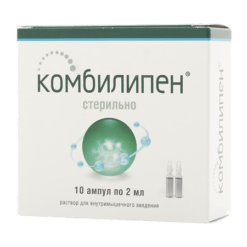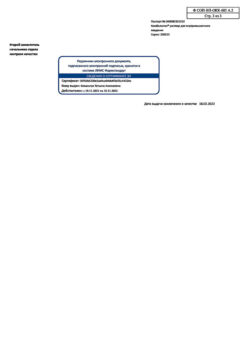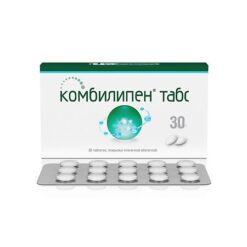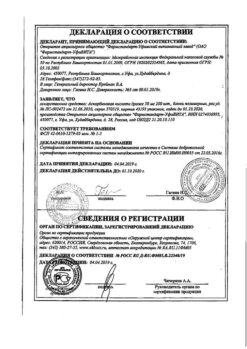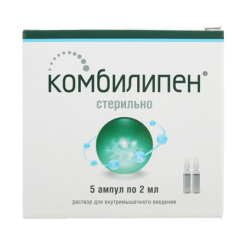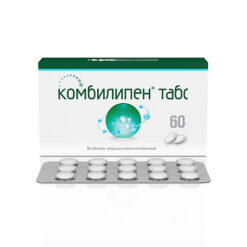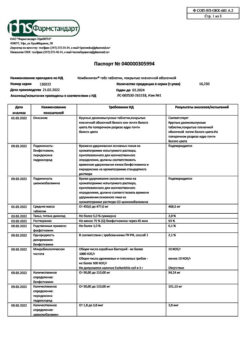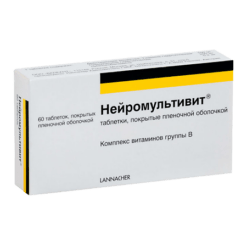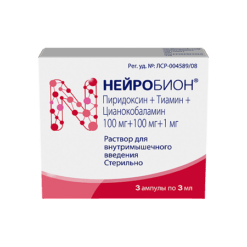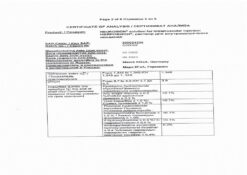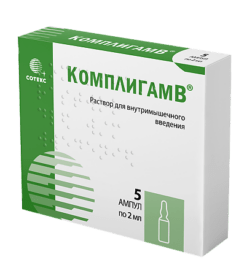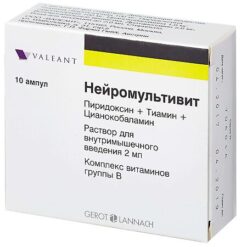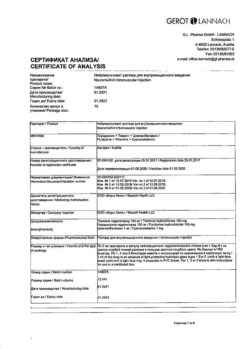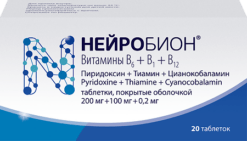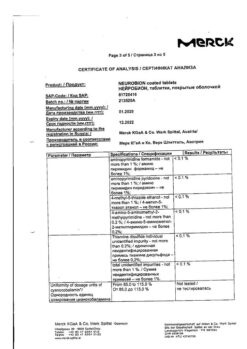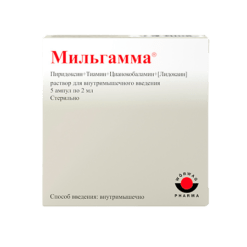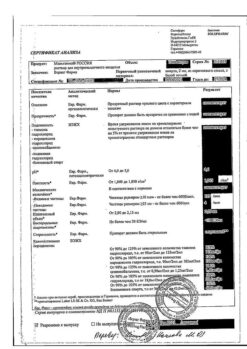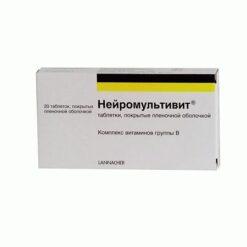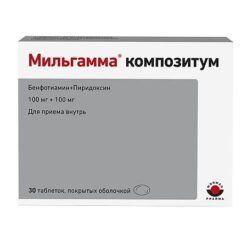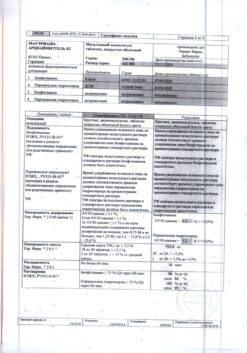No products in the cart.
Combilipen Neo, 2 ml 5 pcs
€1.00
Out of stock
(E-mail when Stock is available)
Description
Pharmacotherapeutic group: B vitamins
ATX code: A11DB
Pharmacological properties
Pharmacodynamics
Pharmacological action is determined by the properties of the vitamins that make up the drug. The drug contains vitamins B1 (thiamin), B6 (pyridoxine) and B12 (cyanocobalamin), deficiency of which may lead to neurological disorders, mainly in the peripheral nervous system.
Neurotropic B vitamins have beneficial effects on inflammatory and degenerative diseases of the nerves and musculoskeletal system.
A special role in the metabolic processes of the nervous system plays a combined effect of vitamins B1, B6, B12, proven that the effectiveness of the combination is superior to the individual component. The combined use of B vitamins accelerates the regeneration of damaged nerve fibers, also proven analgesic effect of the complex.
Thiamine plays a key role in the processes of carbohydrate metabolism, which are critical in the metabolic processes of nervous tissue (involved in the conduction of the nerve impulse), and the Krebs cycle, with subsequent participation in the synthesis of thiamine pyrophosphate (TPP) and adenosine triphosphate (ATP).
Pyridoxine has a vital influence on the metabolism of proteins, carbohydrates and fats; it is essential for normal hematopoiesis and the functioning of the central and peripheral nervous system. It provides synaptic transmission, the processes of inhibition in the central nervous system (CNS), participates in the transport of sphingosine, which is part of the nerve sheath, participates in the synthesis of catecholamines.
The physiological function of both vitamins is to potentiate each other’s action, manifesting itself in a positive effect on the nervous, neuromuscular and cardiovascular systems. It is a cofactor in the reactions of the transfer of single-carbon groups, is involved in the synthesis of myelin sheath, stimulates hematopoiesis, reduces pain associated with lesions of the peripheral nervous system, stimulates nucleic metabolism through the activation of folic acid.
Pharmacokinetics
. After intramuscular administration, thiamine is rapidly absorbed from the injection site and enters the blood (484 ng/mL after 15 min on the first day of the 50 mg dose) and is unevenly distributed in the body, with its content in white blood cells 15%, red blood cells 75% and in plasma 10%.
Thiamine penetrates the blood-brain and placental barriers and is found in the mother’s milk. Thiamine is excreted in the urine in the alpha phase after 0.15 hours, in the beta phase after 1 hour and in the terminal phase within 2 days. The main metabolites are thiamine carboxylic acid, pyramine and some unknown metabolites. Of all vitamins, thiamine is retained in the body in the smallest amounts. The adult body contains about 30 mg of thiamine as 80% thiaminpyrophosphate, 10% thiaminotriphosphate, and the rest as thiaminmonophosphate.
After intramuscular administration, pyridoxine is quickly absorbed into the bloodstream and distributed in the body, acting as a coenzyme after phosphorylation of the CH2ON group in the 5th position to form metabolically active pyridoxalphosphate. About 80% of the vitamin is bound to plasma proteins.
Pyridoxine is distributed throughout the body and crosses the placenta and is found in mother’s milk, deposited in the liver and oxidized to 4-pyridoxylic acid, which is excreted in the urine, maximum 2-5 hours after absorption. The human body contains 40-150 mg of vitamin B6 and its daily elimination rate is about 1.7-3.6 mg with a replenishment rate of 2.2-2.4%.
After parenteral administration, cyanocobalamin forms complexes with the transcobalamin transport protein, which are rapidly absorbed by the liver, bone marrow and other organs. Cyanocobalamin is excreted into the bile and takes part in the intestinal-hepatic circulation. It passes through the placenta.
Indications
Indications
Composition
Composition
How to take, the dosage
How to take, the dosage
Interaction
Interaction
Special Instructions
Special Instructions
The drug should only be administered intramuscularly, avoiding vascular ingestion. If accidentally administered intravenously, the patient should be monitored by a physician or hospitalized, depending on the severity of the resulting symptoms. Other vitamins, especially cyanocobalamin, may be inactivated in the presence of vitamin B1 degradation products.
The clinical picture as well as laboratory tests for funicular myelosis or pernicious anemia may lose their specificity with vitamin B12 administration.
The drug may cause neuropathies with prolonged use over 6 months.
There is no information about caution regarding the use of the drug Kombilipen® NEO by drivers of vehicles and persons working with potentially dangerous mechanisms. However, caution is recommended, taking into account the possibility of developing adverse reactions of the drug.
Synopsis
Synopsis
Contraindications
Contraindications
Overdose
Overdose
Additional information
| Weight | 0.059 kg |
|---|---|
| Shelf life | 2 years. Do not use after the expiration date stated on the package. |
| Conditions of storage | Store in a dark place at temperatures from 2 to 8 ° C. For patients: It is allowed to store the drug at the temperature not more than 25 °С for 14 days. Keep out of reach of children. |
| Manufacturer | Pharmstandard-UfaVITA, Russia |
| Medication form | solution |
| Brand | Pharmstandard-UfaVITA |
Other forms…
Related products
Buy Combilipen Neo, 2 ml 5 pcs with delivery to USA, UK, Europe and over 120 other countries.


